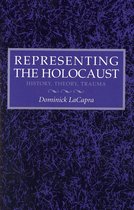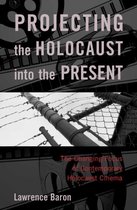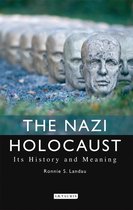Making Sense of the Holocaust by Means of Backward Narration Ebook Tooltip Ebooks kunnen worden gelezen op uw computer en op daarvoor geschikte e-readers. Martin Amis's Time's Arrow
Afbeeldingen
Sla de afbeeldingen overArtikel vergelijken
Auteur:
Thomas Neumann
- Engels
- E-book
- 9783638046213
- 06 mei 2008
- 17 pagina's
- Adobe ePub
Samenvatting
The problem of finding appropriate ways to represent the Holocaust has been haunting Holocaust literature ever since Theodor Adorno's famous dictum that there cannot be any poetry after Auschwitz. In fact, the uniqueness of the Holocaust raises serious ethical questions whether there can be any appropriate representation of these atrocious events at all. As the horror of Auschwitz goes beyond human imagination, the problem boils down to the one question: How can you imagine the unimaginable?
Martin Amis's novel Time's Arrow or the Nature of the Offence (1991) has a rather bold answer to this question: by narrating it backwards. In the novel, the story of the Nazi doctor Odilo Unverdorben is narrated vice versa, following his life from end to start through the eyes of a ghostlike narrator who emerges at the point of his death. As the technique of backward narration distinguishes Time's Arrow from almost any other Holocaust fiction, in the following my focus will be on the novel's use of narrative reversal to represent the Holocaust. I will argue that the technique of backward narration offers a way to make sense of the Holocaust and Nazism in general, thereby showing that the novel's form and content are inseparably linked. In order to do this, I will first go over some of the negative criticism that Time's Arrow was exposed to, focusing on the problem of form and content. I will then show how backward narration offers a solution to specific problems in Holocaust literature and how it helps to avoid the danger of aestheticising Auschwitz. After that, I will point out that backward narration can help to understand the Holocaust, exploring the connections between Nazism and the temporal and moral reversal effected by narrative reversal. Finally I will examine the influence of Robert Jay Lifton's The Nazi Doctors on Time's Arrow. By applying Lifton's theory of psychological doubling to the novel, the close connections between form and content will once again be highlighted.
Productspecificaties
Wij vonden geen specificaties voor jouw zoekopdracht '{SEARCH}'.
Inhoud
- Taal
- en
- Bindwijze
- E-book
- Oorspronkelijke releasedatum
- 06 mei 2008
- Aantal pagina's
- 17
- Ebook Formaat
- Adobe ePub
- Illustraties
- Nee
Betrokkenen
- Hoofdauteur
- Thomas Neumann
- Hoofduitgeverij
- Grin Publishing
Lees mogelijkheden
- Lees dit ebook op
- Android (smartphone en tablet) | Kobo e-reader | Desktop (Mac en Windows) | iOS (smartphone en tablet) | Windows (smartphone en tablet)
Overige kenmerken
- Editie
- 1
- Extra groot lettertype
- Nee
- Studieboek
- Nee
EAN
- EAN
- 9783638046213
Je vindt dit artikel in
Kies gewenste uitvoering
Bindwijze
: E-book
Prijsinformatie en bestellen
De prijs van dit product is 10 euro en 99 cent.
Direct beschikbaar
Verkoop door bol
- E-book is direct beschikbaar na aankoop
- E-books lezen is voordelig
- Dag en nacht klantenservice
- Veilig betalen
Houd er rekening mee dat je downloadartikelen niet kunt annuleren of retourneren. Bij nog niet verschenen producten kun je tot de verschijningsdatum annuleren.
Zie ook de retourvoorwaarden
Rapporteer dit artikel
Je wilt melding doen van illegale inhoud over dit artikel:
- Ik wil melding doen als klant
- Ik wil melding doen als autoriteit of trusted flagger
- Ik wil melding doen als partner
- Ik wil melding doen als merkhouder
Geen klant, autoriteit, trusted flagger, merkhouder of partner? Gebruik dan onderstaande link om melding te doen.








